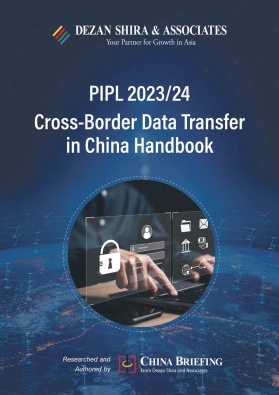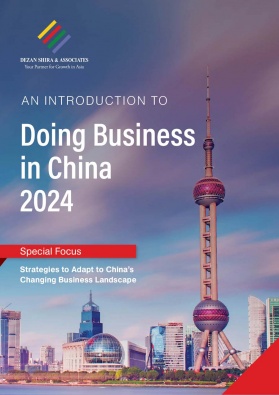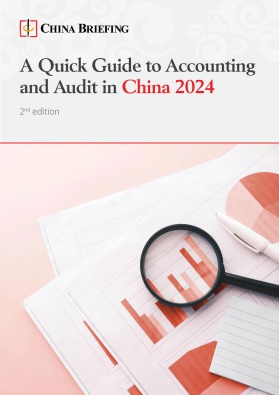Shanghai Introduces New Guidelines for Cosmetic Advertising
The Shanghai Cosmetics Industry Advertising Compliance Guidelines establish comprehensive regulations for cosmetic advertising, covering aspects such as product classification, efficacy claims, and endorsement activities. These guidelines aim to ensure transparency, integrity, and compliance within the cosmetics industry, signaling a significant step towards standardized advertising practices and enhanced consumer protection.
On March 6, 2024, the Shanghai Administration for Market Regulation and the Shanghai Medical Products Administration jointly issued the final version of the Shanghai Cosmetics Industry Advertising Compliance Guidelines (hereinafter, the “Guidelines”). A first draft of the Guidelines had been previously released for public consultation on September 25, 2023.
The Guidelines address crucial aspects of cosmetic advertising, ranging from product efficacy claims to endorsement activities and targeted marketing. Notably, the Guidelines represent the first set of regulations for cosmetic advertising jointly released by local regulatory bodies since the release of the 2021 Cosmetic Supervision and Administration Regulation (CSAR). As such, they carry considerable importance in guiding the industry forward.
In this article, we outline some of the key measures proposed in the Guidelines to regulate Shanghai’s cosmetics industry advertising.
Key provisions of the Guidelines
Consisting of six chapters and 41 articles, the Guidelines are informed by several key legal documents, including the Advertising Law, the Anti-Unfair Competition Law, and the Consumer Rights Protection Law.
The main objective of the Guidelines is to promote the healthy development of the cosmetics sector while ensuring compliance with regulatory frameworks.
Scope of application and legal responsibility
Article 2 of the Guidelines outlines the scope of application, which includes cosmetics producers, operators, and entities integrating cosmetics into their operations. These stakeholders are obligated to comply with the guidelines when conducting commercial advertising activities to promote their own manufactured or operated cosmetics.
Cosmetics producers and operators are accountable for verifying the authenticity and legality of the advertisements they develop, produce, and distribute, whether executed independently or through external agencies. This responsibility extends to outsourcing the design, production, and release of cosmetics advertisements.
To fulfill this responsibility effectively, it is advisable to formalize agreements through legally compliant contracts. These contracts should clearly delineate the roles and responsibilities of all involved parties, ensuring adherence to advertising regulations throughout the process.
Classification of cosmetics and application procedures
The Guidelines define cosmetics as follows:
- Daily chemical industrial products intended for cleaning, protecting, beautifying, and decorating the human body surface.
- These products encompass items used on skin, hair, nails, lips, and other areas, commonly applied through methods such as smearing, spraying, or similar means.
Article 4 of the Guidelines provides the regulatory framework for various types of cosmetics in China, classifying them into two categories, namely, special cosmetics and ordinary cosmetics.
Special cosmetics encompass products with specific functions, including:
- Hair dyes
- Hair perming solutions
- Freckle-removing (whitening) products
- Sunscreens
- Anti-hair loss treatments
- Cosmetics with new efficacies
Furthermore, cosmetics with new efficacies extend to products that demonstrate unique properties such as:
- Cosmetics with efficacies or application areas not listed in the Cosmetic Classification Rules and Catalogue (hereinafter, the “Classification Catalogue”);
- Cosmetics applicable to pregnant women or breastfeeding women; and
- Infant or children cosmetics with efficacies outside the restricted scope stipulated in the Classification Catalogue.
All these categories are subject to registration management overseen by the National Medical Products Administration (NMPA) to ensure compliance with regulatory standards and safeguard consumer health.
Ordinary cosmetics, on the other hand, encompass all other types of cosmetics, including products such as moisturizers, cleansers, makeup, and fragrances. These cosmetics are subject to a simpler filing procedure to ensure compliance with safety and quality standards.
While toothpastes are not defined as cosmetics, they are managed with reference to the regulations for general cosmetics.
Notably, cosmetics lacking legal qualifications cannot be advertised in China.
| Registration and Filing Procedures for Cosmetics in China | |
| Type of cosmetics | Procedures |
| Registration of special cosmetics |
|
| Filing for ordinary cosmetics | The filing process is deemed to be completed where the filing entity submit the filing materials through the information service platform in accordance with the NMPA requirements.
Since 2022, annual reports must be submitted from January 1 to March 31 of each year. |
Qualification and certifications for cosmetics advertisement
To ensure compliance, cosmetics advertisements must have specific qualifications and certification requirements, including:
- A valid business license;
- A “Cosmetics Production License” for cosmetics produced in China (domestic cosmetics);
- Proof of cosmetics registration or filing completion;
- Product quality inspection qualifications for cosmetics, including an “Entry-Exit Inspection and Quarantine Certificate” for imported cosmetics; and
- Inclusion of relevant materials verifying the authenticity of the advertising content.
The criterion for distinguishing between “imported” and “domestic” cosmetics relies solely on the location where the last manufacturing stage involving contact with the product itself is carried out. Domestic cosmetics are those where this final step occurs within the Chinese mainland, while imported cosmetics are those where the final step occurs outside of the Chinese mainland.
This also means that when the product’s last manufacturing stage involving contact with the product itself is completed in Hong Kong, Macao, or Taiwan, it shall be managed with reference to the requirements of imported cosmetics.
Prohibited cosmetics advertisement
The Guidelines prohibit the advertising of six categories of cosmetics, as follows:
- Cosmetics not registered or filed with the appropriate regulatory authorities;
- Cosmetics whose registration certificates have been revoked, suspended, or whose filing has been canceled;
- Cosmetics formulated by cosmetics operators without proper authorization;
- Cosmetics produced using prohibited raw materials for cosmetics production, unregistered new materials that should be registered, or unfiled new materials that should be filed;
- Cosmetics announced by drug regulatory authorities to cease or suspend operation; and
- Other cosmetics are prohibited from production or operation by law.
Permitted and prohibited efficacy claims
In compliance with the CSAR, Article 15 of the Guidelines meticulously delineates the permissible efficacy claims for cosmetics advertisements. These encompass a spectrum of functions, including:
- Hair dyeing
- Perming
- Freckle-removing (whitening)
- Sunscreen
- Anti-hair loss
- Other categories listed in the Classification Catalogue, which include anti-acne, nourishing, repairing, cleansing, makeup removal, moisturizing, cosmetic modification, fragrance, deodorizing, anti-wrinkle, firming, soothing, oil-control, exfoliating, refreshing, hair care, anti-breakage, dandruff removal, hair color care, and hair removal.
However, Article 17 clarifies that it is not appropriate to advertise the efficacy that does not belong to cosmetics. The specific restrictions on efficacy claims in cosmetics advertisements are illustrated below.
| Restrictions on Efficacy Claims for Cosmetics Advertising | |
| Product type | Prohibited efficacy claims |
| Anti-hair loss | Claims unrelated to cosmetics, such as those implying regulation of hormone levels or promotion of hair growth |
| Anti-acne | Suggestions of therapeutic effects on diseases or regulatory impacts on hormone levels |
| Skin repair | Endorsements of use on scarred, burned, or damaged areas |
| Deodorant | Claims on inhibiting microbial growth for deodorization |
| Soothing products | Claims on the ability to inhibit and improve pathological hyperhidrosis (sweating) or similar terms |
| Beauty treatment | Promotion of eyelash growth or similar alterations |
| Anti-wrinkle | Suggestions of wrinkle removal or smoothing |
| Haircare | Implications of repairing damaged hair quality or split ends |
It is worth mentioning that several companies in China have reportedly faced penalties for asserting “repairing” effects in their cosmetic advertisements. One such instance occurred in April 2021, where a Shanghai-based cosmetic company was fined RMB5,000 (approx. US$693.74). This penalty was imposed due to their promotion of cosmetics on their WeChat public account, with claims like “promoting the repair of damaged cuticles and resisting external disturbances.”
Furthermore, according to the Guidelines, if cosmetics advertisements attribute efficacy claims to specific ingredients, these claims should align closely with the overall efficacy claims of the cosmetics. Advertisers are prohibited from implying or asserting effects that the product doesn’t actually possess, or effects that aren’t permitted based on the functions of the advertised ingredients.
Additionally, they must refrain from implying or asserting therapeutic effects on diseases based on the functions of the advertised ingredients, and from advertising ingredients that are not actually present in the advertised cosmetics formula or that are prohibited.
The Guidelines also stress that any efficacy claims beyond the 26 specified categories in the Classification Catalogue, as well as claims of suitability for pregnant and lactating women, will be regarded as claims for new cosmetic efficacy. Consequently, they will necessitate special cosmetics registration certification.
Other claims
The following table outlines other key regulations outlined in the Guidelines for crafting truthful and transparent cosmetic advertisements.
| Guidelines for Cosmetic Advertisement Claims | |
| Category | Guidelines |
| Clarity in claims |
|
| Avoid medical claims |
|
| Truthfulness claims |
|
| Natural/Organic claims |
|
| Additive claims |
|
| Efficacy claims validation | Claims of mildness or suitability for sensitive skin must be proven through testing. |
Moreover, the Guidelines also specify that the following misleading claims should be avoided:
- Promoting the absence of ingredients prohibited for use in cosmetic production, such as “free of heavy metals”;
- Promoting the absence of allergens or sensitizing substances, implying that the product will not cause allergies; and
- Exaggerating the harmfulness of ingredients that can be legally added, denigrating competitors, such as promoting that silicone oil can cause pore blockage or alcohol can cause skin allergies, etc.
Advertisement of cosmetics targeted at specific demographics
As outlined in the Guidelines, cosmetics designed for children, under the age of 12, are subject to stricter advertising rules. Article 34 specifies that:
- Advertisements for cosmetics targeting infants (0-3 years) can only promote the efficacy of cleaning, moisturizing, hair care, sun protection, soothing and refreshing.
- Advertisements for cosmetics tailored to children (3-12 years) may encompass additional benefits, such as makeup, makeup removal, fragrance, and hair care.
In addition, sunscreen advertisements for children should refrain from claiming efficacy beyond skin application. Non-children’s cosmetic advertisements must refrain from claiming suitability for children under 12 and avoid implying “universal” or “family” use. It is not appropriate to use the terms “gene technology” and “nanotechnology” in the advertising of children’s cosmetics.
Meanwhile, children’s cosmetics advertisements should not use words such as “swallowing” or food-related patterns, or easily confuse cosmetics with food and may induce children to ingest content.
Live marketing and endorsement
According to the Guidelines, cosmetic companies that employ live marketing (such as e-commerce livestreaming) for product promotion are required to comply with the regulatory standards set forth in the Compliance Guidelines for Live Streaming Marketing Activities in Shanghai.
Moreover, key requirements for endorsements in cosmetic advertisements include:
- Restrictions on endorsers’ age: Minors under 10 years old cannot be featured as endorsers in cosmetics advertisements, including those for children’s cosmetics.
- Prohibition of controversial personalities: Endorsements by individuals with a history of illegal or unethical behavior are not permitted.
- Alignment with product efficacy claims: Endorsers must be consistent with the claimed efficacy of the product and the intended user demographic. Where the endorser speaks for children’s cosmetics or cosmetics of the opposite sex, the product should be fully and reasonably used by its close relatives.
- Verification of efficacy claims: Endorsers claiming the efficacy of cosmetics must provide evidence based on their personal usage experiences. Endorsements should reflect the endorser’s personal use rather than relying on others’ experiences or test results.
Final takeaways
The issuance of the Guidelines in Shanghai underscores the regulatory importance placed on cosmetics advertising and promotion. Therefore, it is advisable for cosmetic companies, especially operators, to meticulously study and adhere to these Guidelines to minimize risks to their business operations.
Undoubtedly, non-compliant advertising has been an ongoing challenge within the cosmetics industry, impacting both renowned international and domestic brands, as well as smaller brands, all of which have faced penalties for violations. As Shanghai takes the lead in introducing cosmetic advertising guidelines following the new regulations, it signifies a significant step in addressing this issue.
The Guidelines in Shanghai serve as a good example for other local governments. A nationwide standardization of cosmetic advertising practices could be fostered, which may herald a new era where compliance takes precedence, regulations are strictly enforced, and accountability for violations is upheld.
About Us
China Briefing is one of five regional Asia Briefing publications, supported by Dezan Shira & Associates. For a complimentary subscription to China Briefing’s content products, please click here.
Dezan Shira & Associates assists foreign investors into China and has done so since 1992 through offices in Beijing, Tianjin, Dalian, Qingdao, Shanghai, Hangzhou, Ningbo, Suzhou, Guangzhou, Dongguan, Haikou, Zhongshan, Shenzhen, and Hong Kong. We also have offices in Vietnam, Indonesia, Singapore, United States, Germany, Italy, India, and Dubai (UAE) and partner firms assisting foreign investors in The Philippines, Malaysia, Thailand, Bangladesh, and Australia. For assistance in China, please contact the firm at china@dezshira.com or visit our website at www.dezshira.com.
- Previous Article Decoding China 2024 Green Industry Catalogue: Key Takeaways
- Next Article China Unveils New Guidelines on Optimized Payment Services for Foreigners: An Overview









